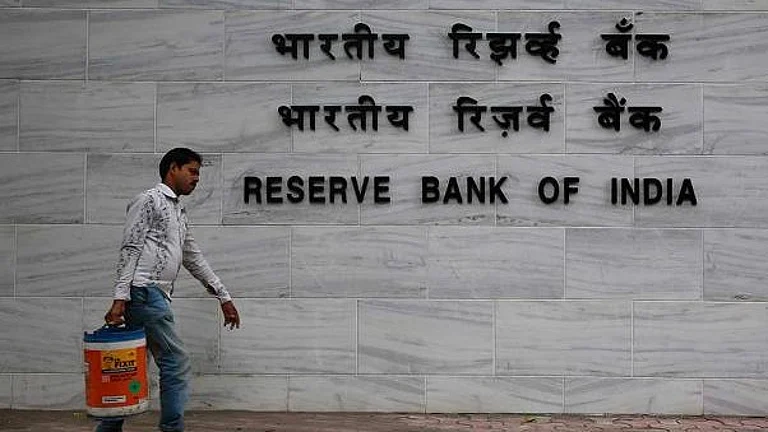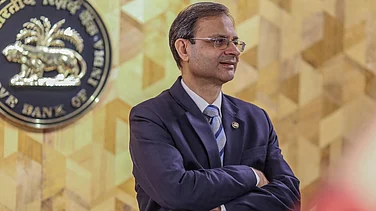The Reserve Bank of India (RBI) has made a strategic move to balance the “growth-inflation” matrix, resisting pressure from the Union government to slash interest rates. The central bank has reduced the cash reserve ratio (CRR) from 4.5 per cent to 4 per cent to enhance liquidity in the banking sector. This will foster credit flow without compromising the RBI’s inflation mandate which falls in the tolerance range of 2-6 per cent.
Let’s first understand the meaning of CRR. The cash reserve ratio represents the percentage of a bank’s public deposits that it is required to hold as cash reserves with the RBI. This ensures banks have enough funds to meet customers’ withdrawal demands and manage liquidity effectively.
Theoretically, the CRR plays a key role in controlling the money supply in the country. The central bank usually increases the CRR to limit the funds available for lending during periods of high inflation to reduce liquidity and cool down prices. On the contrary, the RBI decreases the CRR during slow economic growth to allow banks to lend money more freely which automatically stimulate investment and boost economic activity.
However, the central bank’s approach diverges from the textbook application of CRR. RBI Governor Shaktikanta Das, during the recent MPC meeting, announced the CRR rate cut by 50 basis point to release liquidity to the tune of Rs 1.16 lakh crore into the banking system. This move will address the liquidity constraints but it has raised concerns over inflation.
Will higher liquidity Impact Inflation?
Economists are optimistic that the CRR cut will not lead to inflationary pressures in India. Though the central bank raised its inflation forecast for this fiscal year to 4.8 per cent from earlier 4.5 per cent, given the slower decline in food inflation and sluggish demand in the market. The MPC also anticipated that high food prices will keep overall inflation elevated during the October-December quarter as well.
“The liquidity infusion is unlikely to have a significant impact on inflation. In theory, higher liquidity could drive demand and fuel inflation. But the current demand environment in India remains subdued. It was intended to ease financial conditions, boost credit growth, and support the nascent demand,” Vikram Chhabra, Senior Economist, 360 ONE Asset told Outlook Business.
He stated that liquidity conditions have tightened lately, declining from a surplus of about Rs 2.9 trillion in early October to nearly neutral by the end of November. The economy witnessed the fall due to increase in currency demand during the festive season and higher foreign exchange intervention to support the Indian rupee amid heavy FPI outflows.
“Tighter liquidity conditions are also impacting credit growth, which dropped from about 13-14 per cent in the September quarter to 11 per cent YoY by mid-November. An improvement in credit growth, particularly in retail credit, would be positive for consumer spending. But it will not have any noticeable impact on the prices of essential goods and services due to subdued demand,” he said.
Other economists called it a “strategically-timed measure” to ease liquidity constraints and invigorate economic activity across sectors. “The RBI’s cautious outlook underscores its commitment to maintaining durable price stability while fostering sustainable growth,” said Vikas Gupta, CEO and Chief Investment Strategist, OmniScience Capital.
Food inflation is expected to ease in Q4 FY25 as seasonal vegetable price reductions and kharif harvest arrivals bring relief, Gupta said, adding that the robust performance of private consumption and the services sector continues to underline the Indian economy’s resilience.
There are some temporary headwinds such as monsoon disruptions and election-related factors which are anticipated to wane, paving the way for a recovery in the coming quarters, he added.
Gaurav Kumar, Founder and CEO of Yubi Group asserted that the liquidity injection is a step toward addressing the country’s GDP growth slowdown. He said it will enable businesses to expand, and individuals to meet their financial needs.
“It also gives us a solid foundation to channel this liquidity effectively. However, for this to translate into real growth, the banking system must focus on responsible lending and ensure that the benefits reach sectors and borrowers that drive the economy forward,” said Kumar.
“More money flowing into the hands of borrowers means more businesses hiring, more consumption, and a stronger foundation for growth. This is how lending becomes not just a financial transaction but a tool for nation-building,” he added.
Notably, the real GDP growth forecast for FY25 has been revised downward from 7.2 per cent to 6.6 per cent, reflecting recent economic challenges. Headline CPI inflation spiked to 6.2 per cent in October from 5.5 per cent in September and sub-4 per cent levels earlier in the fiscal year, driven by a sharp rise in food inflation and a modest uptick in core inflation.































